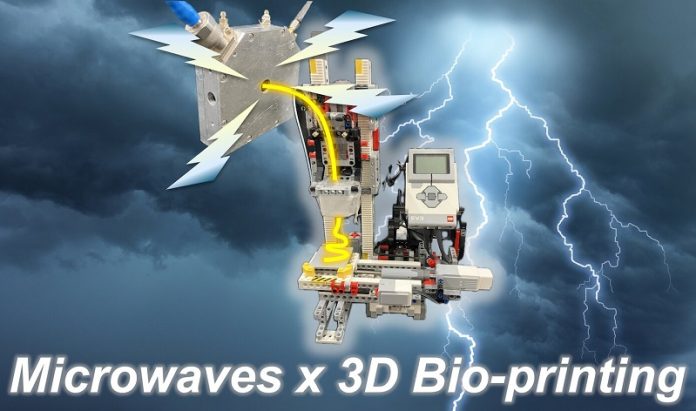
For many older adults and people with certain health conditions, something as simple as swallowing food can become a daily challenge.
This condition, called dysphagia, affects millions around the world and often forces people to eat puréed or jelly-like meals that, while safe, can take away the pleasure of eating.
A team of researchers from Kyushu University in Japan and Cardiff University in the UK has now developed a groundbreaking method to bring variety and enjoyment back to these meals using 3D printing and microwave technology.
The study, published in Scientific Reports, shows how scientists have created a special type of “bioink” made from egg white protein and canola oil.
This bioink can be printed into different food shapes and textures, while carefully applied bursts of radiofrequency (RF) or microwave (MW) energy determine how soft or firm the food becomes.
Dr. Shuntaro Tsubaki, who led the research at Kyushu University, explained that the key was precision heating. Traditional cooking heats everything at once, but microwaves can be tuned to selectively heat specific materials.
By adjusting the frequency of the energy used, the team could control how the proteins in the bioink reacted, which in turn affected the gel’s hardness, stickiness, and water retention.
The researchers built a custom 3D bioprinter to test their idea, inspired in part by earlier designs from their Cardiff partners.
The printer extrudes the liquid bioink through a fine nozzle, and as it passes through, it is hit with a controlled burst of energy that instantly turns it into a gel. The gel is then deposited layer by layer, creating a solid but safe-to-swallow food.
What makes this breakthrough especially exciting is the range of textures that can be achieved. For example, when the team applied lower-frequency radio waves at 200 MHz, the gel became firmer and held its water content well, making it suitable for those who can handle more solid food.
At a higher frequency of 2.45 GHz—the same used in ordinary kitchen microwaves—the result was a much softer, stickier gel, better suited to people who require gentler textures.
“The important thing is that we can control the texture by frequency, creating a customized meal for each person’s swallowing ability,” said Tsubaki.
The implications go far beyond dysphagia diets. This method could one day be used to make artificial meat, specialized medical foods, or even meals for astronauts in space. By fine-tuning protein structures and even trapping flavors inside the gels, researchers hope to create food that is not only safe but also enjoyable and nutritious.
For people who miss the taste and feel of real meals, this technology could transform eating from a difficult necessity back into a source of comfort and joy.
If you care about nutrition, please read studies about berry that can prevent cancer, diabetes, and obesity, and the harm of vitamin D deficiency you need to know.
For more health information, please see recent studies about the connection between potatoes and high blood pressure, and results showing why turmeric is a health game-changer.



